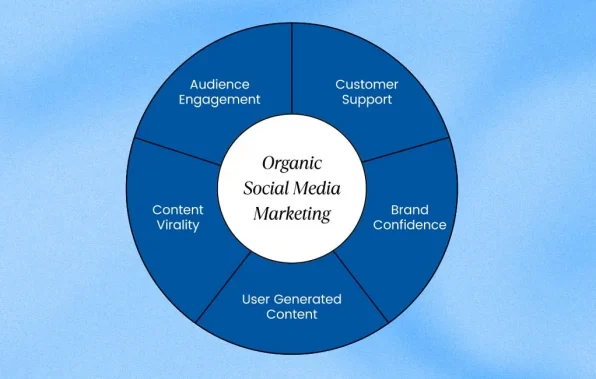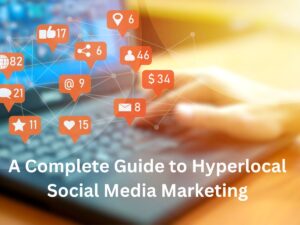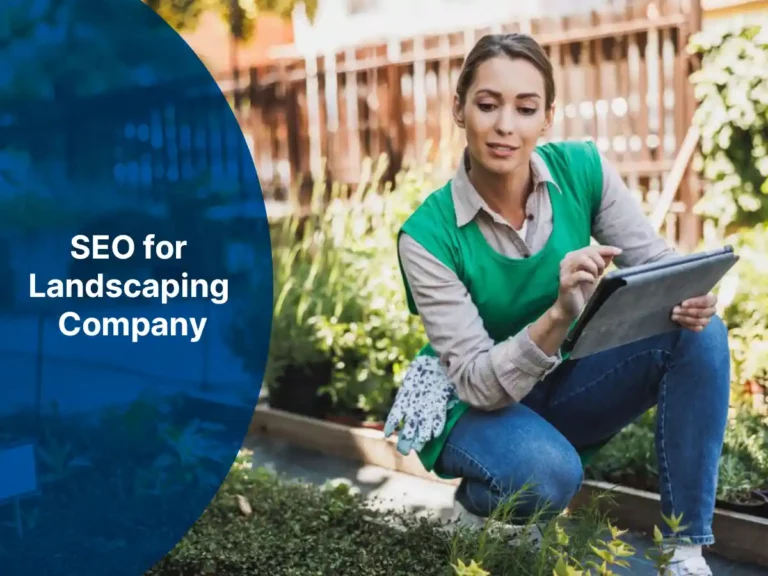In the ever-evolving digital arena, Organic Social Media Marketing has emerged as a powerful strategy to build authentic relationships with consumers. This article delves into the world of organic social media marketing. In fine, it is a cost-effective approach that leverages high-quality content and engagement to grow your online presence.
We’ll explore how businesses, from startups to established brands, can harness the power of organic social media to increase brand awareness, foster community, and drive long-term growth. Whether you’re new to social media or looking to refine your strategy, this article offers insights to help you navigate the organic social media landscape effectively.
Let’s embark on this journey to unlock the potential of organic social media marketing.

What is Organic Social Media Marketing?
Organic social media marketing refers to the use of free tools provided by social media platforms. Thus, you can build a community, engage with it, and respond to comments. It involves sharing content such as posts, photos, videos, memes, stories, etc. All users, including businesses and brands, share those contents on their feeds.
Here are some key aspects of organic social media marketing:
- Audience Engagement: Organic social media allows brands to establish their personality and voice, and build relationships. It is done by sharing informative, entertaining, and/or inspiring content. This way you can engage customers at every stage of their buying journey.
- Customer Support: It’s a platform for brands to support their customers with customer service.
- Brand Confidence: You can share insights into the general day-to-day activities of your business, or larger actions, such as closing a deal with a well-known company. These are just a couple of examples of how to generate confidence in your brand.
- User-Generated Content: Organic social media typically gathers client information or feedback. And then, you can promote user-generated content.
- Content Virality: Organic social media can help content go viral. Resultantly, your business reaches a wider audience beyond just the followers of a brand.
It’s important to note that while organic social media marketing is free, it’s highly competitive due to algorithm updates. Therefore, many businesses find that a hybrid strategy, which includes both organic and paid social media marketing, is most effective.

Why Do You Need Organic Social Media Marketing?
We can site several potential reasons why businesses need organic social media marketing. Here you go with the key points why Organic social media marketing is crucial:
- Validity and Trust: When users see an advertisement on social media, they often visit the brand’s social media profile next. If you don’t have an organic social media strategy to augment paid efforts, you’re likely lacking in followers and engagement. Organic social media boosts the validity of your brand and helps build trust among your audience.
- Customer Connection: Organic social media is the only way to connect with potential customers once they’re followers truly. It allows brands to show their true values and culture, while also learning about the values of their customers.
- Brand Awareness and Community Building: Organic social media is mostly used for brand awareness, education, visibility, engagement, community building, product testing, getting feedback, and lead generation.
- Long-Term Relationships: With organic social media, the primary goal is to engage with the brand’s existing follower base and to build long-term relationships with those customers.
- Lead Generation: Organic social media plays an essential role in lead generation campaigns as businesses continue to expand online. It allows companies to free market their products and services to a devoted audience.
- Word-of-Mouth Marketing: An organic strategy can assist with word-of-mouth (WOM) marketing as people will visit your social profile to see what others are saying about your brand.
Remember, the best way to get traction with your social media is to implement both organic and paid strategies. Organic posts are enhanced by running ad campaigns, and ad campaigns generally perform better if an organic strategy is in place.

Difference Between Organic and Paid Social Media Marketing
There are significant differences between organic and inorganic social media marketing. Let’s explore the key aspects of the social marketing approaches. Sure, it will help us fathom the between organic and paid social media marketing precisely:
Organic Social Media Marketing:
- Organic marketing strategies are essentially free.
- They include creating your original content and content created by a loyal fan.
- Organic marketing is much more authentic, and consumers trust it more than paid advertisements.
- Organic marketing campaigns keep the interest of current followers and build an online community.
- Some free strategies include hashtags, your story, live feeds, and direct messages.
- Word-of-mouth marketing, such as reviews and recommendations from your followers, is the most effective way to increase organic traffic to your site.
- The main goal of organic marketing is to increase brand awareness and build a connection with your audience. You mostly do it through educational or entertaining content.
- Organic marketing uses SEO, social media, and a variety of other channels to increase brand awareness.
Paid Social Media Marketing:
- Paid marketing strategies involve paid advertisements, like banner ads and sponsored posts.
- These advertisements typically micro-target a specific audience related to your brand.
- Inorganic marketing, or paid marketing, uses paid methods to target, reach, engage, and convert audiences quickly.
- Inorganic marketing strategies include paid search ads, paid social media ads, sponsored posts, display ads, video ads on YouTube, etc.
- A benefit of inorganic traffic is it allows you to micro-target your ideal audience.
- A con of inorganic traffic is people are more skeptical of sponsored posts as opposed to a friend recommendation.
Now, let’s draw a conclusion from the presentation we have had on these two types of social media marketing. While organic marketing lets you focus on creating brand awareness, inorganic marketing lets you convert users to leads. Both strategies have their benefits and can be used effectively depending on your business goals. And combining organic and inorganic posting is often the best strategy for boosting traffic quickly and reaching a wider audience.

How to Develop an Organic Social Media Marketing Strategy for Beginners?
An inclusive strategy, consisted of a set of comprehensive and interconnected approaches, can help you in this regard. Here’s a detailed guide on how to develop an organic social media marketing strategy for beginners:
- Identify the Social Media Platforms You’ll Focus On: Not all social media platforms will be suitable for your business. Identify where your target audience spends most of their time and focus on those platforms.
- Make It Easy for Customers to Find You on Social Media: Use consistent usernames and logos across all platforms. Include links to your social media profiles on your website and in your email signature.
- Plan Your Organic Social Media Posts Monthly with a Content Calendar: A content calendar helps you plan and schedule your posts in advance. This ensures you have a steady stream of content being posted regularly.
- Follow the 80/20 Rule for Your Helpful and Promotional Organic Social Media Content: 80% of your content should be helpful and engaging to your audience, while the remaining 20% can be promotional.
- Define Your Target Audience: Understanding your audience is key to creating content that resonates with them.
- Incorporate Ecommerce: If applicable, integrate your ecommerce platform with your social media accounts to facilitate easy purchasing.
- Optimize Your Social Channels for Search: Use keywords in your profile and posts to improve visibility in search results.
- Focus on a Few Key Channels: Rather than spreading yourself thin across many platforms, focus on a few key channels where your audience is most active.
- Make a Plan for Customer Service: Decide how you will handle customer inquiries and complaints on social media.
- Develop a Recipe Card to Guide You: This is a document that outlines your strategy, including your goals, target audience, content themes, and posting schedule.
- Measure Your Results: Use analytics tools to track the performance of your posts and adjust your strategy as needed.
- Adjust Your Tactics: Based on the results you measure, make necessary adjustments to your strategy.
Remember, the goal of organic social media marketing is to build a community around your brand. So, be authentic, engage with your audience, and provide valuable content.

10 Ways to Increase Your Organic Reach on Social Media
You can adopt numberless techniques to boost your organic reach on social media. But let’s delve into 10 proven ways to achieve that goal faster without hiccups.
- Focus your efforts on the right places: Not all social media platforms may be suitable for your brand or business. It’s important to identify where your target audience spends most of their time and focus your efforts there. This could involve conducting market research or using analytics tools to understand your audience’s behavior.
- Optimize your social media profiles: Your social media profile is like your digital business card. It should clearly communicate who you are, what you do, and what you’re about. This includes using a clear profile picture, writing a compelling bio, and making sure your branding is consistent across all platforms.
- Post evergreen content: Evergreen content is content that remains relevant and continues to drive traffic long after it is first published. This could include how-to guides, tips, product reviews, and other content that provides long-term value to your audience.
- Work smarter, not harder: This involves using tools and strategies to make your social media management more efficient. This could include using social media management tools to schedule posts, automating certain tasks, and using analytics to understand what type of content performs best.
- Use targeting to maximize organic potential: Social media platforms offer various targeting options. And that allows you to show your content to specific demographics based on factors like age, location, interests, and more. By targeting your content, you can ensure it reaches the most relevant audience.
- Post during slow hours: Posting during off-peak hours when your audience is most active can help increase engagement. You can use analytics tools to understand when your audience is most active and schedule your posts accordingly.
- Post the right types of content: Different types of content can generate different levels of engagement. This could include text posts, images, videos, stories, polls, and more. It’s important to test different types of content and see what resonates most with your audience.
- Promote your profiles everywhere: Make sure your audience knows where to find you by promoting your social media profiles across all your marketing channels. This could include your website, email newsletters, social media platforms, and offline materials like business cards and flyers.
- Post the right balance of promotional/useful content: While it’s important to promote your products or services, too much promotional content can turn your audience off. Try to maintain a balance by also providing useful content that educates, entertains, or inspires your audience.
- Interact with and engage your followers: Engaging with your followers helps build a community around your brand. This could involve responding to comments, hosting Q&A sessions, running contests, and more.
You should be aware that social media marketing is not a one-size-fits-all approach. What works for one brand may not work for another. It’s important to continually test, analyze, and adjust your strategy based on your unique goals and audience.
Wrap Up
In summing up, Organic Social Media Marketing is a powerful tool for businesses to authentically engage with their audience and build lasting relationships. While it differs from Inorganic Marketing in its approach and cost, its potential for long-term growth is significant.
By understanding these differences and implementing effective strategies, businesses can maximize their organic reach, fostering a loyal community of followers. As we navigate the ever-evolving digital landscape, the value of organic social media marketing continues to grow. And it promises a bright future for businesses willing to invest in authentic, meaningful engagement.
FAQs
Examples of organic content on social media include genuine posts, user-generated content, and authentic interactions. It encompasses posts that naturally resonate with the audience, fostering engagement without relying on paid promotions or advertisements.
Organic social media holds fundamental value by building authentic connections with the audience. It enhances brand credibility, fosters community engagement, and establishes trust. Unlike paid strategies, organic efforts generate sustainable, long-term relationships and contribute to a positive brand image.
Organic social media skills encompass content creation, community management, and audience engagement. Proficiency in understanding platform algorithms, utilizing hashtags effectively, and creating compelling, shareable content are crucial. Additionally, skills in analytics interpretation aid in refining strategies for optimal organic reach.
The future of organic social media lies in meaningful connections and authentic storytelling. As platforms evolve, emphasis on genuine engagement, user experience, and community building will continue to grow. Brands will need to adapt and prioritize quality content that resonates with their audience for sustained organic success.
Instagram and TikTok currently offer substantial organic reach. Leveraging visually appealing content, storytelling, and strategic use of features like Instagram Stories and TikTok challenges can significantly boost visibility. Pointedly, they accomplish the job without relying extensively on paid promotions. However, the effectiveness may vary based on the target audience and content strategy.











